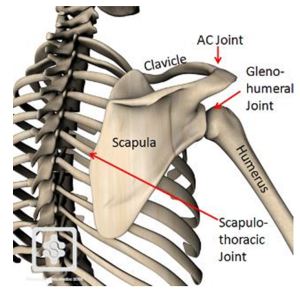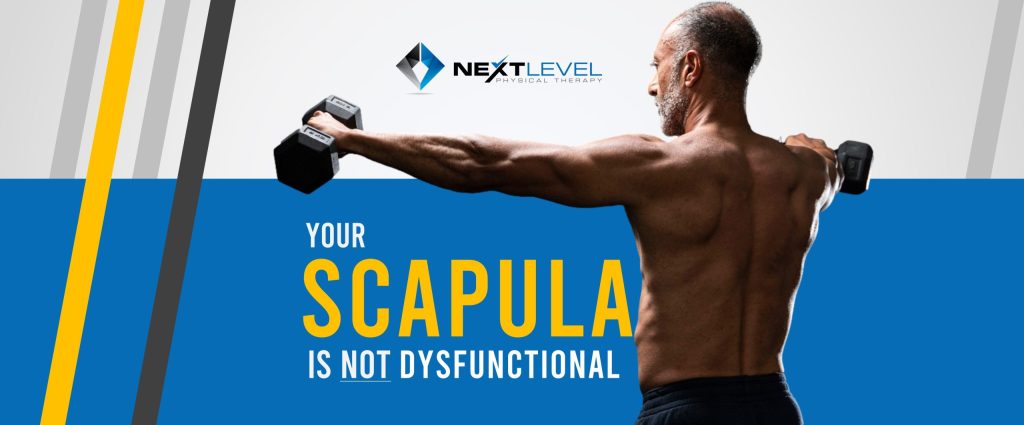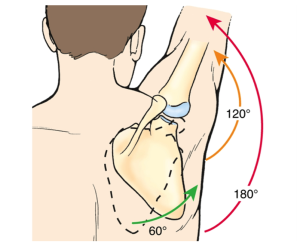Dr. Leor Giladi, CSCS, CF-L2
I think we can all agree that shoulder pain sucks. Personally, I use my arms all of the time. To put on clothes, shower, feed myself, drive, lift weights, do pushups, write this article, and a whole lot more. If you’re anything like me, you do too. There are a lot of possible causes of shoulder pain, but if you’re in a group of people diagnosed with scapular dyskinesis, scapular instability, or scapular dysfunction, which are essentially the same thing, I have something to tell you. It’s the truth, but I don’t know if you’re ready for it.
Are you sure? Really really sure? Alright, you asked for it…
There is no such thing as a dysfunctional scapula 😱
I know, you must be shook, but allow me to climb onto my soap box for a minute. I believe that the word “dysfunctional” has no place in a discussion about how bodies move. It reinforces unhelpful narratives around our bodies being fragile or broken, which can lead to hesitation, fear avoidance, and increased risk of repeat injuries. How? Our good friend Dumbledore said it best:
“Words are, in my not-so-humble opinion, our most inexhaustible source of magic. Capable of both inflicting injury, and remedying it”

(his beard is filled with wisdom)
Using the word dysfunctional implies that there is a functional, normal, and/or correct way for a shoulder to move. Those who are dysfunctional are therefore abnormal, incorrect, and at risk for harming themselves. The terms dyskinesia, abnormal mechanics, and instability have similar issues. They’re binary. You’re either normal or abnormal with no room in the middle. It’s unintentional mental framing that leads to a self-limiting belief. People with these diagnoses commonly avoid activities out of a fear of making things worse, which in the end actually makes things worse! Just because your shoulder doesn’t work as well as you want doesn’t mean there’s something wrong with it. You just need to figure a few things out.
The anatomy is important here. There are three main structures to consider when thinking about the shoulder: the ribcage, the scapula, and the humerus. The scapulo-thoracic joint is between the ribcage and scapula while the glenohumeral joint is between the scapula and the humerus.

The scapula is responsible for about 30% of your total shoulder motion, and the scapulo-thoracic joint operates as a “floating” joint with no direct bone-to-bone attachment to the body. Your upper arm bone, the humerus, connects into a socket on the outside edge of the scapula. Your shoulder blade floats because as it moves so does the socket. It can therefore orient and position itself in a wide variety of ways, allowing you to get your hand into a lot of different positions.
The shoulder has more range-of-motion than any other joint in the body. The more motion you have available the more complex movement becomes, and the harder it is to control. This is where the conversation of stability comes in. For the sake of this discussion I’m going to define stability as the ability to resist unwanted motion and/or to return to a desired state after being moved. This is why the common treatments for an “unstable” shoulder include activities like bosu planks, having your therapist slap your arm around while you hold it in one place, lifting and carrying weights hanging from bands, etc. The intent is good but the application is often poor, leading to inconsistent and incomplete results. These activities are complex, with a lot of variables to control. For someone who is already having issues, it’s a lot to ask.
A better approach would be to start with development of passive motion, allowing access to the arm positions needed. Next step would be active motion within this newly acquired motion. From there we need to start producing force in all of these positions and developing both strength and consistency in the desired motor patterns. If the issue still exists at this point then, and only then, do we get into the fancy stuff. For example, I wouldn’t have a client do any form of an “unstable surface” pushup until they can clearly demonstrate 20 crisp and consistent repetitions of the strict pushup first.
While complex, highly variable, dynamic activities might look sexy they are the top of the pyramid, not the bottom. You need to properly build the foundations before you get there. If you’ve been struggling to get your shoulders back to where you want them to be, and you feel like you’ve tried everything, I highly encourage you to go back and master your basics using the progression above. If you can’t figure it out, hire a skilled professional who truly understands the process. There’s nothing wrong with your shoulder, it’s just struggling to manage complexity.




